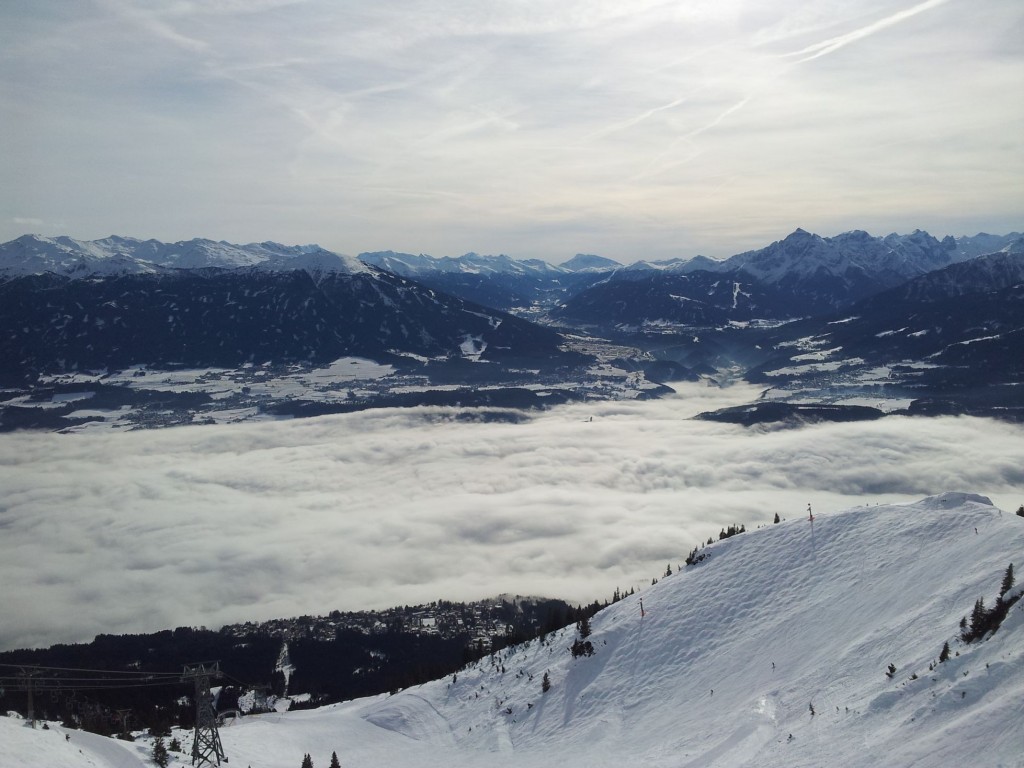
Top researchers – researchers at the top. From left to right: Robert Rollinger, Jaakko Hämeen-Anttila, Ilkka Lindstedt, Josef Wiesehöfer, Marie Oellig, Saana Svärd and Sebastian Fink.
In January, the IHANE project members gathered to the beautiful city of Innsbruck for a two-day workshop titled “Intercultural Transfers.” The event was hosted by Zentrum für Alte Kulturen of the University of Innsbruck. In addition to Helsinki and Innsbruck, we also heard presentations from colleagues from Padova and Kiel.
The fourteen presentations kept with the theme “Intercultural Transfers” admirably. The atmosphere was collegial and the discussions on papers were conducted in a lively and friendly manner. Instead of attempting to comment each paper, I have chosen to highlight the wide chronological and geographical stretch that was enclosed.
Happily, many of the papers covered more than one period. Chronologically speaking, the widest difference was in the two papers examining the relations between Arabic world and Mesopotamia (Jaakko Hämeen-Anttila and my own paper together with Inka Nokso-Koivisto). Interesting presentations were also heard relating to the ancient Near East in general (Simone Heimerl) and Neo-Assyrian Empire specifically (Salvatore Gaspa and Raija Mattila). The paper presented by Sebastian Fink and Kordula Schnegg discussed the possible connection between the Sumerian gala and the Greek galloi. The presentations of Marie Oellig and Irene Madreiter discussed the influence of Neo-Babylonian Empire to the later Hellenistic and Seleucid world. Matthias Hoernes’ discussion bridged the beginning of Common Era, examining the Hellenistic heritage in the numismatics in Arsacid Iran and the Greco-Bactrian kingdom. Arab-Islamic period was approached by Ilkka Lindstedt in his presentation regarding the transmission of historical narratives in the ninth century AD. The latest texts to be examined in the conference were the Hebrew zemirot-hymns of the Middle Ages (Riikka Tuori) and the discussion on Hobbes’ Neo-Latin Poem “De mirabilibus Pecci carmen” from 1627 (Johanna Luggin). The geographical reach of the workshop was completed with the presentation of Walter Kuntner who discussed some new archaeological results in Transcaucasia and Urartu.
In many presentations, methodology was discussed and a desire to conduct comparative research in a careful manner was expressed. Possible cultural transfers in ancient world need to be examined in detail and documented before research results can be concluded.
Because of the wide chronological and geographical reach of the workshop, the discussion was fruitful and exciting and both days continued during dinner following the workshop. The colleagues in Innsbruck were excellent hosts, both in providing the academic environment and in showing us around Innsbruck. For me, one of the highlights of the trip was visit to the Seegrube (1905 m.) and Hafelekar (2269 m). Once the mists cleared, the view to the Innsbruck below was truly spectacular.


